Just before noon today, the UK Carrier Strike Group entered the Red Sea, marking a milestone in the early phase of Operation Highmast — Britain’s largest naval deployment in recent years.
After departing from the eastern Mediterranean, the Carrier Strike Group transited the Suez Canal early this morning, with passage beginning around 6am.
The task group includes the aircraft carrier HMS Prince of Wales, supported by escort and allied vessels such as HMCS Ville de Québec (Canada), HNoMS Roald Amundsen and logistics support ship Maud (Norway), and ESPS Méndez Núñez (Spain). HMS Richmond is expected to join shortly.
The transition into the Red Sea signals the start of the next operational phase of Operation Highmast, an eight-month deployment aimed at strengthening defence ties and bolstering UK presence in the Indo-Pacific. Led by HMS Prince of Wales, the group is expected to conduct joint exercises, port visits, and regional security operations in cooperation with allies including the United States, Australia, and Japan.
RAF assets have also been active in support of the operation. Two Poseidon MRA1 maritime patrol aircraft were spotted over the Sinai Peninsula this morning, likely providing overwatch as the task group moved through one of the world’s busiest and most strategically sensitive waterways.
Operation Highmast follows the precedent set by the 2021 CSG21 deployment and underscores Britain’s continued commitment to a free and open Indo-Pacific. The operation integrates air and naval assets from across the alliance, featuring UK F-35B jets, Merlin helicopters, and unmanned systems alongside allied platforms. Exercises will span the full spectrum of naval warfare, including anti-submarine warfare, maritime strike, and integrated air defence.
Despite today’s developments, Iranian media have been reporting that the UK remains outside the scope of the recent ceasefire agreement between the United States and Yemen. Naval operations in the Red Sea region will continue to be conducted with heightened awareness of ongoing tensions and the threat posed by regional actors.
Commanded by Commodore James Blackmore, the Carrier Strike Group’s deployment is intended to reinforce maritime security, deter potential threats, and enhance joint operational capability in contested environments. The task group’s arrival in the Red Sea marks another step toward that strategic goal.
Further updates will follow as the deployment continues eastward.


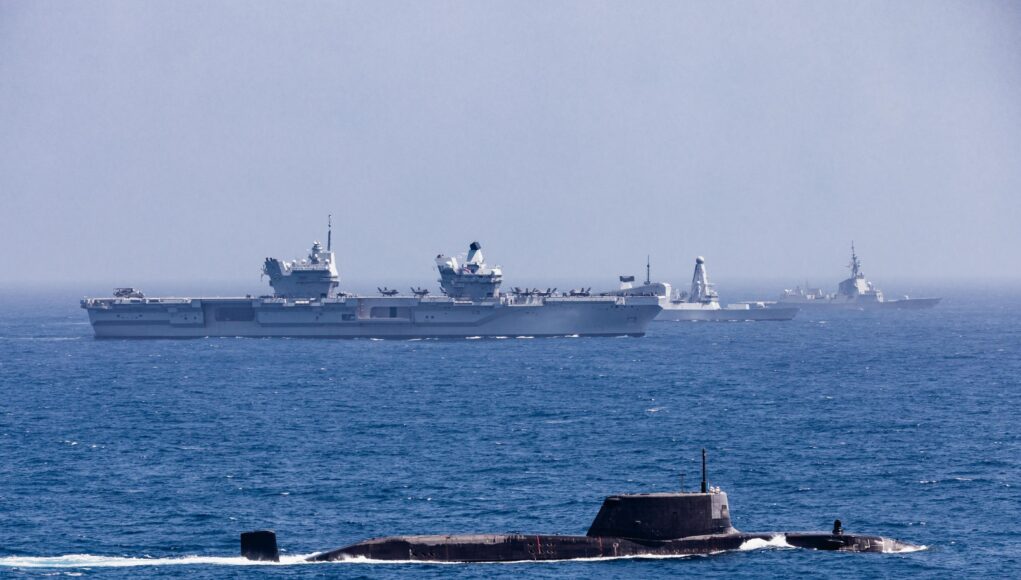
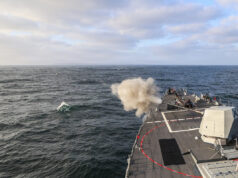
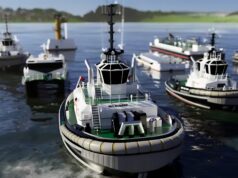
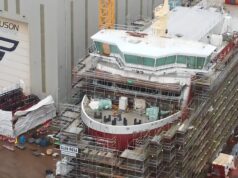
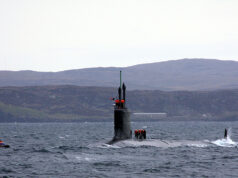
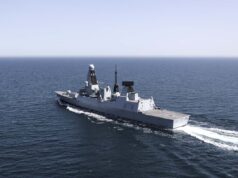

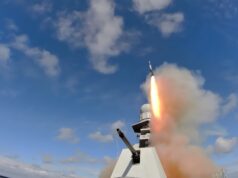
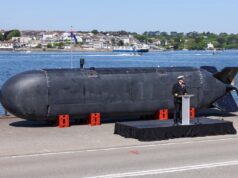
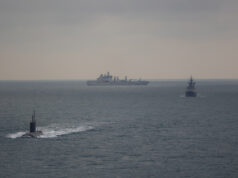
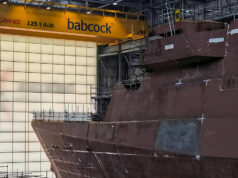

Nice reporting George. Impressive ship, great to see..
I should just add to to my first comment.. Impressive people also. Very professional. Good luck to all involved.
tin jars on!
nice to see a few more ships in the group
Awesome.
Watch out for those killer tomatoes, they’ll be harder to spot in the Red Sea.
“Ich Dien”.
😉Glad you mentioned Tomatoes. Had forgotten to add them to my online grocery order. 👍
And there was us all thinking the USS Theodore Roosevelt was hanging back to assist PoW in transit but she left last week after the Tangarine One bravely surrendered again. Seems there are no US assets assisting now. Great practice for British forces (transiting a hostile straight) and a clear sign of just how useful the base in Cyprus is.
Fingers crossed all goes well.
Ummm ..er…according to open sources, not quite a complete Sit Rep. USS Carl Vinson CSG is currently operating in Gulf of Aden and Gulf of Oman, certainly w/in rapid response distance. USS H.S. Truman CSG was relieved after intensive sustained ops targeting the Houthis. Over 1000 targets were engaged (no, BDA was not released, but precision weapons were employed). Houthis have agreed to a ceasefire. All are free to draw own conclusion; some might believe Houthis are in recovery mode. You’re welcome. Incidentally, willing to wager there will be a US CSG w/in response distance providing overwatch while PWLS CSG is w/in SCS. The stated intent of CSG25 is to demonstrate FOC, thus would presume (relatively) independent operation would be an explicit requirement.
Very much. There were several Voyager alone there a few days ago.
Voyagers follow the group to make sure the limited endurance F35s can be kept in the air – and bring along a couple of Typhoons to help out.
The Americans are losing the sense of what being an ally is all about.
I’m fairly certain this force of warships is more than able to defend itself from anything the Huitis and Iranians would like to try to throw at them.
They’ve got 2 Aegis equipped frigates + a type 45 destroyer + a type 23 able to run close protection. Should be adequate, would have preferred a 2nd type 45 along but 4 of them are in refit for PIP work and the only other available type 45 is in UK home waters- which is fair enough.
I wonder if the USN were requested to provide a AB destroyer but they declined and asked to see the UK and European allies to go it alone.
Just shines a spotlight on the perilous state of the RN now- down to just 8 frigates and 6 destroyers- we need type 31 and type 26 programmes accelerated with promises of more batch orders to come and continuous construction- type 31. An air defence variant of either type 31 or type 26 would be a useful addition to the fleet to supplement the inadequate numbers of type 45s.
Maybe they could upgrade the current T31s in build though it’d blow the costs out and further delays. With a stronger radar and or additional search radar or, just build an additional 3+ with the lot!
Def build more we need a batch 2 ordered t31 and with incremental improvements. To that also order more t26 as well
too right- continuous production- follow the current first batch of type 31s with a revised batch 2 optimised for surface strike. Additional type 26 frigates is a growing call and requirement- those ships may very well save our bacons in the future and getting as many of them in service as possible seems only sensible.
Type 32 frigate can or might as well just be a revised type 31- Babcock have already proposed their revised AH140 frigate hull for littoral warfare and deploying PODS/ USV and USSV
The RN also needs more Proteus and Sterling castle type drone motherships for protection of our subsea national infrastructure.
I would have liked to have seen an AEW asset or two, to compliment the P8s, watching for drones and managing any targetting response perhaps but errr, we capability gapped those didn’t we! I suppose, in it’s current form the CSG is a NATO operation so, perhaps we could have mustered some up from one of our allies?
i instead of maybe type 83, ii.i would be e quite happy if we would build another six batch 2 Updated T 45 . might be and faster than starting with a blank piece of paper.
Well the hour is will chase them out.after they run out of fitted for but not fitted with capabilities
n problem folks starmer is stopping the boats🤬🤬W⚓R
Just keep the aircraft fastened down securely guys, that seabeds turning into an aircraft graveyard!
Iran doing a bit of sabre rattling.. we can see why HMS astute was nice and obviously loading in tomahawks in gib 6 days ago…nothing like a bit of “ we will give you pain as a deterrent “.
Perhaps, but she doesn’t appear to be with the TG at the moment. Playing catch up – maybe!
I suppose she can get where she wants to be pretty fast.. maybe just keeping the Iranians guessing a bit ?
How quick could she transit into the Red Sea from the eastern Mediterranean?
Good question, depends where she is in relation to the TG.
The Suez transit is about 14-15 hrs give or take at about 7-8 it’s. The CSG is now in the Red Sea, with Astute not yet in the vicinity to start her Suez transit, interesting in itself. Last time the CSG went into the Red Sea, the A boat went through with them. From an operational perspective it’s the best option, not saying that she can’t go through by herself, SSNs often do, but, she’s at least 24 hours behind the TG and counting.
Astute finally sailed from Gib this afternoon, if she is going East then she is about a week behind the CSGs current position.
I’m not entirely convinced she’s going East either, which means no UK SSN with the TG, but time will tell.
If the picture is the Commodore his name is Blackett. Easy mistake to make, I suppose.
Blacket is the captain of HMS Prince of Wales, Commodore James Blackmore is commander of the Carrier Strike Group. Pay attention now.
I’d say thanks but…
As the article states … (the deployment) does ‘sends a strong message’. The message is that for a variety of reasons the Royal Navy is seemingly incapable of mustering sufficient credible, deployable and effective assets to meaningfully support its two carriers, or even just one. Instead, relying on ‘allied’ surface combatants to furnish a limited and sub-minimal ‘screen’. I don’t know about submarine escorts – there may or may not have been any on continuous assignment. Myself, being ex-RN (1960s/70s), it greatly grieves me to see how far Britain’s voting public, its political and ‘blob’ class, and the Service’s ‘Leadership’ have allowed Britain’s Naval and Military credibility to be rendered so much less than is needed to face this much more dangerous world. Britain’s past, present and future adversaries and enemies must be laughing. This window-dressing vanity deployment isn’t going to change that.
Whilst I agree with your sentiment Peter, entirely, and I am the strongest and most vocal person in the world for additional RN warships and crucially frigates to be built I think you are missing the point somewhat with the NATO allies warships joining the CSG.
Prince of Wales and Queen Elizabeth are two of only 3 true strike carriers in the whole European continent- the other being Charles De Gaulle.
It is perfectly normal for NATO allies to deploy frigates and destroyers to support a carrier battle group as the RN frequently does for the USN with type 45 destroyers being very much appreciated for their superior radar fit and command and control facilities vs a USN Aegis equipped cruiser or destroyer.
My point is that this is all very normal and in fact when you consider that Europe only has 3 strike carriers ( you can debate Cavour is a strike carrier as she is 28,000 tons and can deploy 15 fixed wing STOVL aircraft if required) it is questionable why more escort warships were not forthcoming, I guess the RN didn’t request more support from its allies.
In a war situation you can guarantee that carrier strike group would double or triple in size as European NATO would most definitely appreciate the Queen Elizabeth class as capital ships and their need to be afforded the best protection. One thing European NATO has plenty of is escort class warships- unlike the UK.
Definitely believe there was a missed photo op going through the Med. Where the Prince of Wales could have linked up with the Charles de Gaulle, Príncipe de Asturias and the Cavour. Perhaps also including Trieste?
That would have been a sight to see. Strong message to the Mad Vlad lovers about just how militarily superior European NATO is Vs Russia on the naval front.
Why censoring anything critical about the royal navy?